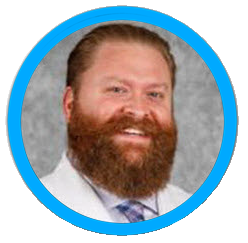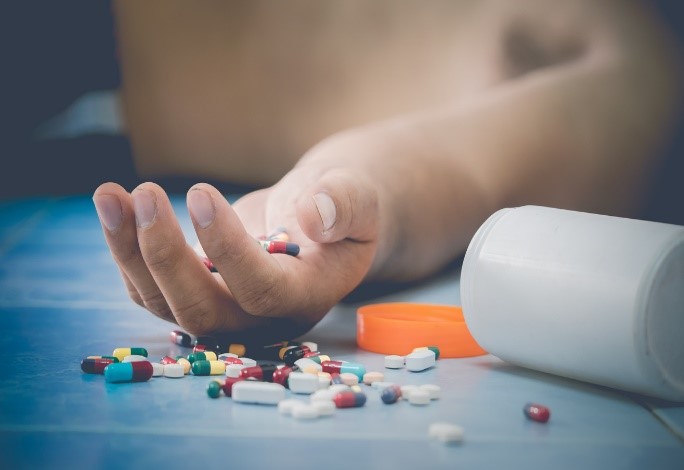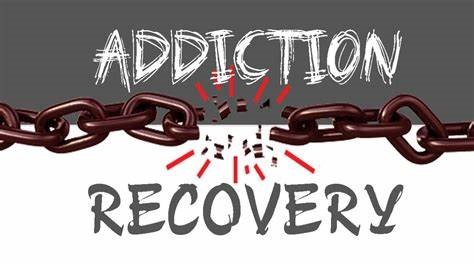LEADS THE FIGHT AGAINST OPIOIDS
Medications-Addiction Treatment (MAT) Programs

 The average person’s foot is four inches wide. Standing on flat earth, that same foot takes up that same four inches. Did you know the average balance beam is also four inches wide? Same foot, same width, same earth – but now elevated on a four-inch-wide balance beam. On the balance beam, one experiences a massive change in perspective. There’s a reason why it’s called a balance beam. When we are ungrounded – have left the ground so to speak – we struggle for balance – even though our foot is still four inches wide on a four-inch-wide balance beam. Being addicted to opioids is a lot like being on the balance beam, high in the air, and struggling not to fall to Earth. For the person who uses drugs, the solution is to find a way, at any price, to stay on the balance beam. My Friend’s House has the solution to get you back to the ground. It’s called Medications-Addiction Treatment (MAT), and it works.
The average person’s foot is four inches wide. Standing on flat earth, that same foot takes up that same four inches. Did you know the average balance beam is also four inches wide? Same foot, same width, same earth – but now elevated on a four-inch-wide balance beam. On the balance beam, one experiences a massive change in perspective. There’s a reason why it’s called a balance beam. When we are ungrounded – have left the ground so to speak – we struggle for balance – even though our foot is still four inches wide on a four-inch-wide balance beam. Being addicted to opioids is a lot like being on the balance beam, high in the air, and struggling not to fall to Earth. For the person who uses drugs, the solution is to find a way, at any price, to stay on the balance beam. My Friend’s House has the solution to get you back to the ground. It’s called Medications-Addiction Treatment (MAT), and it works.
Medication-Assisted Treatment (MAT) is the use of medications, often in combination with counseling and behavioral therapies, to provide a whole-patient approach to the treatment of substance use disorders.
Opioid misuse and addiction are considered a national health emergency. No one starts out wanting to become addicted to opioids. Most people first experience such as a result of an injury or a routine medical procedure where pain medication is prescribed to alleviate pain during the initial stages of healing. It is quite common to see Tylenol with Codeine, Vicodin, Percocet, or OxyContin prescribed to help a patient get through the first few days following an accident such as a broken bone or routine surgery like removing wisdom teeth.
There are others who misuse opioids to deal with stress and emotional pain as discussed in our previous blog on co-occurring disorders (link). Many young adults fall into this category. Since 1999, overdose deaths due to opioids have increased 500% among 15 - 24-year-olds, and deaths in this age group grow by an average of 30.7% annually. A recent study found that high school students who legitimately used prescription opioids were 33% more likely to misuse opioids after high school. Most easily find opioid prescription drugs in the medicine cabinets at home, at friend’s houses, and at the homes of acquaintances.
Once one begins to misuse an opioid it changes the brain’s chemistry leading to a constant craving for the drug resulting in a progressive loss of control to resist or refuse the drug despite the consequences. Eventually one becomes powerless to the drug, and the outcome sadly predictable. However, there are solutions.
 Medications-Addiction Treatment (MAT) utilizes medications approved by the Food and Drug Administration which help block the euphoric effects of alcohol and opioids, relieve intense cravings, and, most importantly, mitigate the withdrawal symptoms that can propel one to relapse. Much in the way a physician prescribes medication for chronic issues such as asthma or diabetes, MAT’s use both oral and injectable forms of buprenorphine-naloxone (Suboxone) and naltrexone (Vivitrol), and also injectable buprenorphine (Sublocade.) Medication is tailored directly to the patient’s cravings and withdrawal symptoms while My Friend’s House assesses other areas of mental health support needed through counseling and therapy - because addiction does not exist in a vacuum. It is known as the whole patient approach and a core of the My Friend’s House approach to successfully treating and overcoming addiction.
Medications-Addiction Treatment (MAT) utilizes medications approved by the Food and Drug Administration which help block the euphoric effects of alcohol and opioids, relieve intense cravings, and, most importantly, mitigate the withdrawal symptoms that can propel one to relapse. Much in the way a physician prescribes medication for chronic issues such as asthma or diabetes, MAT’s use both oral and injectable forms of buprenorphine-naloxone (Suboxone) and naltrexone (Vivitrol), and also injectable buprenorphine (Sublocade.) Medication is tailored directly to the patient’s cravings and withdrawal symptoms while My Friend’s House assesses other areas of mental health support needed through counseling and therapy - because addiction does not exist in a vacuum. It is known as the whole patient approach and a core of the My Friend’s House approach to successfully treating and overcoming addiction.
So, if you find yourself, or someone you know struggling with opioids …. on that elevated beam struggling to balance a four-inch foot on a four-inch space …. remember it’s about the brain’s perspective. Get grounded, get back to firm earth under your feet. Medication-Assisted Treatment programs save lives.






